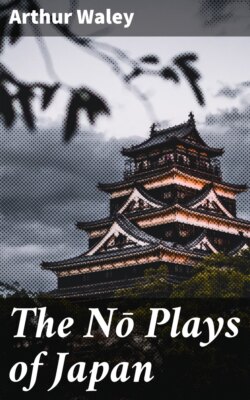Читать книгу The Nō Plays of Japan - Arthur Waley - Страница 12
На сайте Литреса книга снята с продажи.
THE PLAYS.
ОглавлениеTable of Contents
The plays are written partly in prose, partly in verse. The prose portions serve much the same purpose as the iambics in a Greek play. They are in the Court or upper-class colloquial of the 14th century, a language not wholly dead to-day, as it is still the language in which people write formal letters.
The chanting of these portions is far removed from singing; yet they are not “spoken.” The voice falls at the end of each sentence in a monotonous cadence.
A prose passage often gradually heightens into verse. The chanting, which has hitherto resembled the intoning of a Roman Catholic priest, takes on more of the character of “recitativo” in opera, occasionally attaining to actual song. The verse of these portions is sometimes irregular, but on the whole tends to an alternation of lines of five and seven syllables.
The verse of the lyric portions is marked by frequent use of pivot-words[1] and puns, particularly puns on place-names. The 14th century Nō-writer, Seami, insists that pivot-words should be used sparingly and with discretion. Many Nō-writers did not follow this advice; but the use of pivot-words is not in itself a decoration more artificial than rhyme, and I cannot agree with those European writers to whom this device appears puerile and degraded. Each language must use such embellishments as suit its genius.
Another characteristic of the texts is the use of earlier literary material. Many of the plays were adapted from dance-ballads already existing and even new plays made use of such poems as were associated in the minds of the audience with the places or persons named in the play. Often a play is written round a poem or series of poems, as will be seen in the course of this book.
This use of existing material exceeds the practice of Western dramatists; but it must be remembered that if we were to read Webster, for example, in editions annotated as minutely as the Nō-plays, we should discover that he was far more addicted to borrowing than we had been aware. It seems to me that in the finest plays this use of existing material is made with magnificent effect and fully justifies itself.
The reference which I have just made to dance-ballads brings us to another question. What did the Nō-plays grow out of?
